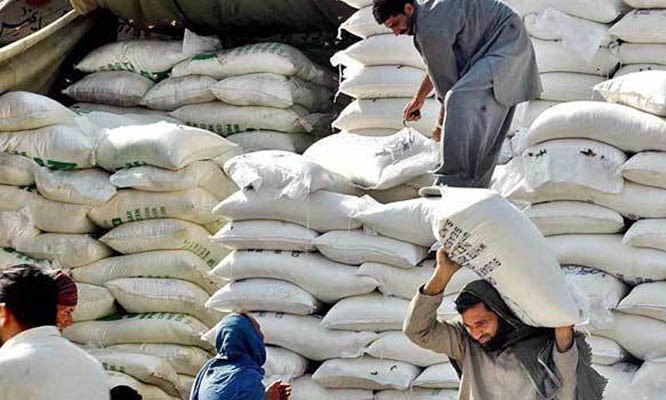
Food fortification can lead to rapid improvements in the health of a population

Food fortification means addition of micronutrients to processed foods. This strategy can lead to relatively rapid improvements in the health of a population. Since the benefits are potentially large, food fortification can be a very cost-effective public health intervention.
In Pakistan, flour, salt and oil are three foods which are being fortified. Wheat is the staple, salt, an integral ingredient used in food and oil is an essential item used to cook food. An official at the Department of Standards and Accredition in Punjab Food Authority, Aleem says, "Adding iodine in salt is mandatory. 99 per cent companies supplying salt are adding iodine in it. The department does quantitative analysis of vegetable oil fortification, assuring 3,500 international units of Vitamin D and 35,000 to 45,000 international units of Vitamin A per litre which are mandatory. In flour, iron, zinc and Vitamin B12 are added."
The 43 million pound Food Fortification Programme funded by DFID is focused on wheat and oil. The person overseeing flour fortification, Dr Aleena says, "Across Pakistan there are more than 1100 flour mills of which only 70 per cent are functional. Micro-feeders needed to mix micro-nutrients in flour have been installed in 96 mills in three districts of Punjab and federal area. We have signed 71 contracts in 8 districts. All mills will be covered in Pakistan by end 2019," she says.
"Regulation for wheat was revised in July 2017. Both federal and provincial governments are enforcing the regulation. Assessment of a mill is important," she says.
Dr Bisma Imran, Provincial Programme Manager, Food Fortification who is heading the oil fortification project, says, "Fortification programme comes when it is direly needed. In Pakistan, more than 50 per cent pregnant women and children are deficient in Vitamin A &D. We are ensuring that all oil is fortified. Thirty one oil mills are on board in Punjab while 25 mills are inducted with us in Sindh. We have signed an MoU with supply chains BASF in Germany and DSM in Singapore that make vitamins available here. We are working in close coordination with mills and the government."
Haris Gazdar, an economist who has researched on flour fortification and has published reports on it, is skeptical about the flour fortification plan. He says, "There is technocratic optimism. There is no global evidence of the benefit of adding iron to wheat and you want to reduce anemia. There is also no study on what percentage of population eats the mill flour," he says.
Gazdar explains, "Then there are different figures of the number of flour mills, varying from 1100 to 1300. Mills get wheat on subsidised rate and then purchase from the open market as well but do not disclose how much. They divert a lot of wheat to making a product they call "fine". This too needs fortification."
There are certainly issues of regulation. The government has been unable to regulate this sector. "There are studies of the World Bank and FAO that say there are problems in regulations," he says.
A report titled, Going against the grain of optimism: flour fortification in Pakistan by Natasha Ansari, Rashid Mehmood and Haris Gazdar, says, "Poor people base their preferences for different types of flour on price as well as perceptions of nutritional value. Many of these flour types are not covered by fortification programmes."
Gazdar says, "There is no count of chakkis and people in the rural areas are reported as more anemic."
Read also: The first 1000 days and after
"There have been at least seven wheat flour fortification interventions in Pakistan -- two national and five regional -- since 2005. Independent evaluations are not publicly available for any of these. Why have these programmes failed," Gazdar questions.
Pakistan has high rates of stunting and wasting among children, and high rates of iron deficiency among adult women and children alike. Populations that consume few animal source foods may suffer from a high prevalence of several micronutrient deficiencies simultaneously. Efforts are also underway to help poorer communities identify, domesticate and cultivate traditional and wild micronutrient-rich foods as a simple and affordable means of satisfying micronutrient needs.
Micro Nutrient Malnutrition (MNM) has profound implications for economic development and productivity. Worldwide, the three most common forms of MNM are iron, vitamin A and iodine deficiency. Together, these affect at least one third of the world’s population, the majority of whom are in developing countries.`